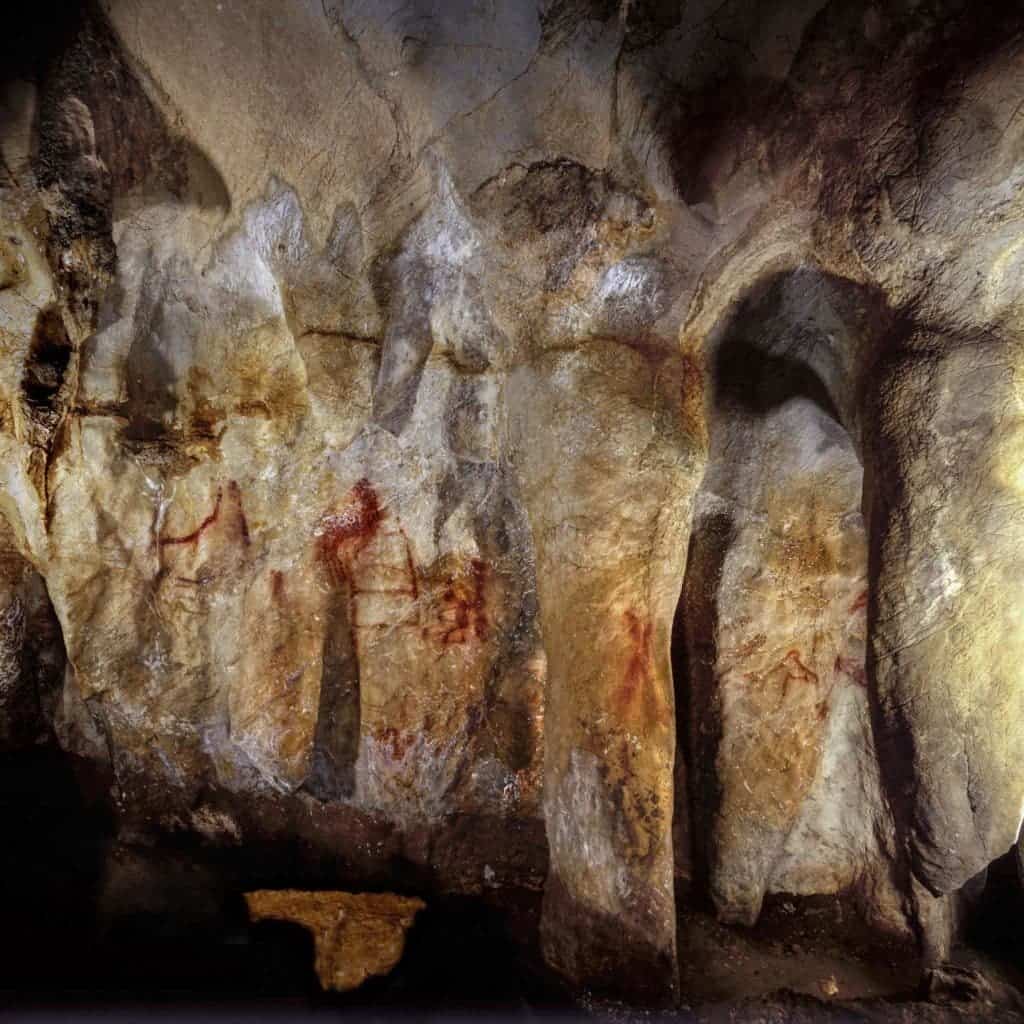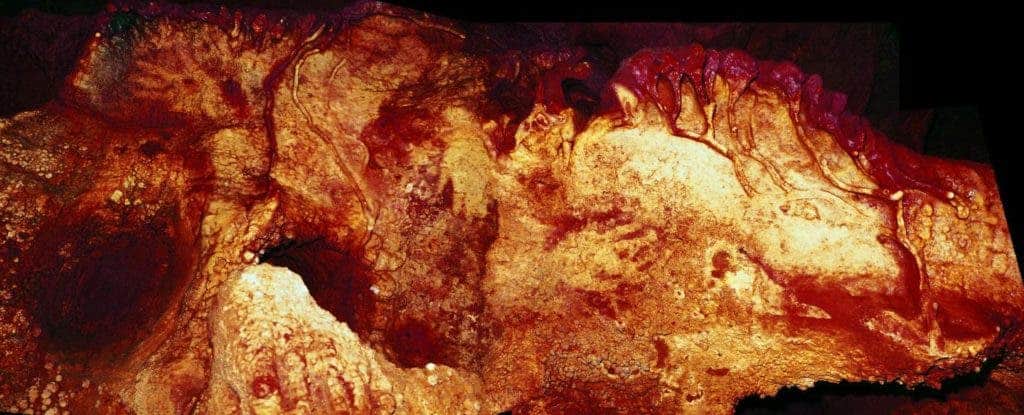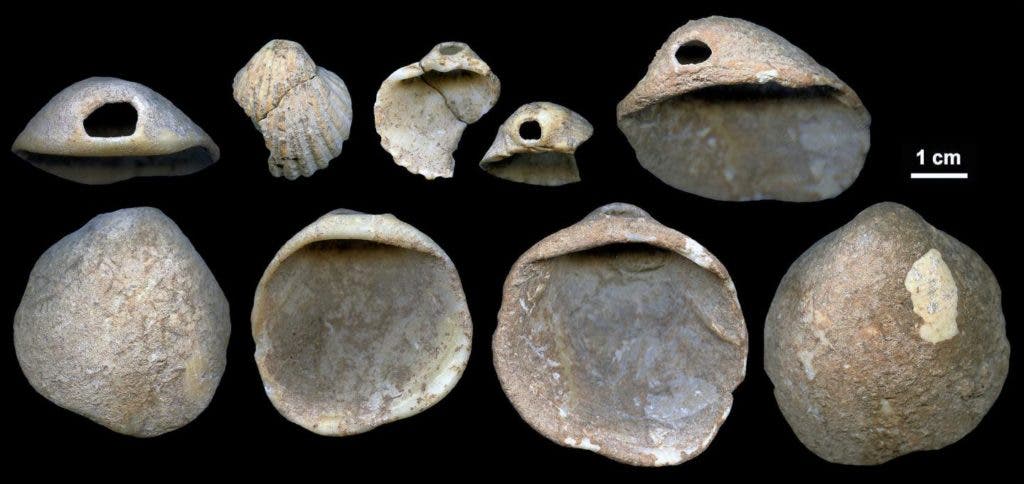As early as 64,000 years ago, Neanderthals in today’s Spain were creating impressive cave paintings, showing that they were just as artistic and creative as humans.

Essentially human
Neanderthals, our closest biological relatives, were extremely similar to us. They shared common behaviors, common characteristics, and even common territory to early humans. They were also much more sophisticated than most people give them credit for.
But they might have also shared something else with our ancestors, something which we consider fundamentally human: our ability to understand symbolism.
“The emergence of symbolic material culture represents a fundamental threshold in the evolution of humankind. It is one of the main pillars of what makes us human”, says Dirk Hoffmann of the Max Planck Institute for Evolutionary Anthropology. “Artefacts whose functional value lies not so much in their practical but rather in their symbolic use are proxies for fundamental aspects of human cognition as we know it.”
A team of researchers from the UK, Germany, Spain, and France analyzed carbonate samples from three cave sites in Spain: La Pasiega (north-eastern Spain), Maltravieso (western Spain) and Ardales (south-western Spain).
All three caves contain spectacular red or black cave paintings depicting animals, dots and geometric signs, as well as hand stencils, handprints and engravings.
These aren’t necessarily new findings, but for the first time, researchers have been able to prove that they must have been made by Neanderthals, since they were the only ones around when the cave paintings were made.

The team used a dating technique that isn’t commonly employed in anthropology: Uranium-Thorium dating. This dating technique relies on analyzing the isotopic content of the two elements and dating the sample by calculating the decay of Uranium 234 into Thorium 230. The technique is widely used to date calcium carbonate materials such as stalactites or corals, but was only recently implemented to anthropology thanks to technological advancements. Radiocarbon technique, which is currently much more common, isn’t able to date back far enough.
The team dated the paintings to 64,000 years ago — 20,000 years before humans modern humans arrived in Europe. This means that Neanderthals were the artists behind the paintings.
“Our dating results show that the cave art at these three sites in Spain is much older than previously thought”, says team member Alistair Pike from the University of Southampton. “With an age in excess of 64,000 years it predates the earliest traces of modern humans in Europe by more than 20,000 years. The cave art must thus have been created by Neanderthals.”
“Dating cave art accurately and precisely, but without destroying it, has so far been difficult to accomplish”, adds Hoffmann. “Thanks to recent technical developments we can now obtain a minimum age for cave art using Uranium-Thorium (U-Th) dating of carbonate crusts overlying the pigments.”
Artistic thinking
This is the first time any evidence of a Neanderthal cave painting has been found — until now, this artform had been considered human and human alone. There has been some evidence that Neanderthals used body ornamentation around 40,000 to 45,000 years ago, but some researchers believed that they learned the idea from humans, a theory which was almost impossible to disprove. The only way to clearly show that Neanderthals came up with the idea on their own was to date their work to before they met humans — and that’s exactly what this study does.

Joint lead author Dr. Chris Standish, an archaeologist at the University of Southampton, said:
“This is an incredibly exciting discovery which suggests Neanderthals were much more sophisticated than is popularly believed.
“Our results show that the paintings we dated are, by far, the oldest known cave art in the world, and were created at least 20,000 years before modern humans arrived in Europe from Africa – therefore they must have been painted by Neanderthals.”
Neanderthals also dyed and decorated marine shells. Perforated shells were found in sediments in Cueva de los Aviones and date to between 115,000 and 120,000 years, indicating that their artistic practices can be traced even further back.
It’s also significant that this is not a one-off accident — paintings were found in three caves 700 km apart, indicating a long-standing tradition passed on from generation to generation. It’s quite possible that many other similar works of art still exist, but we just haven’t found them yet.
“This is certainly just the beginning of a new chapter in the study of ice age rock art”, says Gerd-Christian Weniger of the Foundation Neanderthal Museum Mettmann, one of the leaders of the Ardales excavations.
It’s intriguing to think about it, but this is convincing evidence that humans and Neanderthals shared the same artistic sense and the same ability for symbolic thinking. Neanderthals weren’t the brutes they’re often portrayed as — they were thinkers and artists just like our ancestors.
But this also raises an even more exciting possibility: since both humans and Neanderthals shared creative abilities, it’s possible that they both inherited them from a common ancestor. If this is the case, we might have to look even further — much further — down in history to find where these abilities first appeared.
“According to our new data Neanderthals and modern humans shared symbolic thinking and must have been cognitively indistinguishable”, concludes Joao Zilhao, team member from the Catalan Institution for Research and Advanced Studies in Barcelona and involved in both studies. “On our search for the origins of language and advanced human cognition we must therefore look much farther back in time, more than half a million years ago, to the common ancestor of Neanderthals and modern humans.”
The paper, U-Th dating of carbonate crusts reveals Neandertal origin of Iberian cave art, is due for publication in Science on Friday, 23 February 2018. DOI: 10.1126/science.aap7778.


